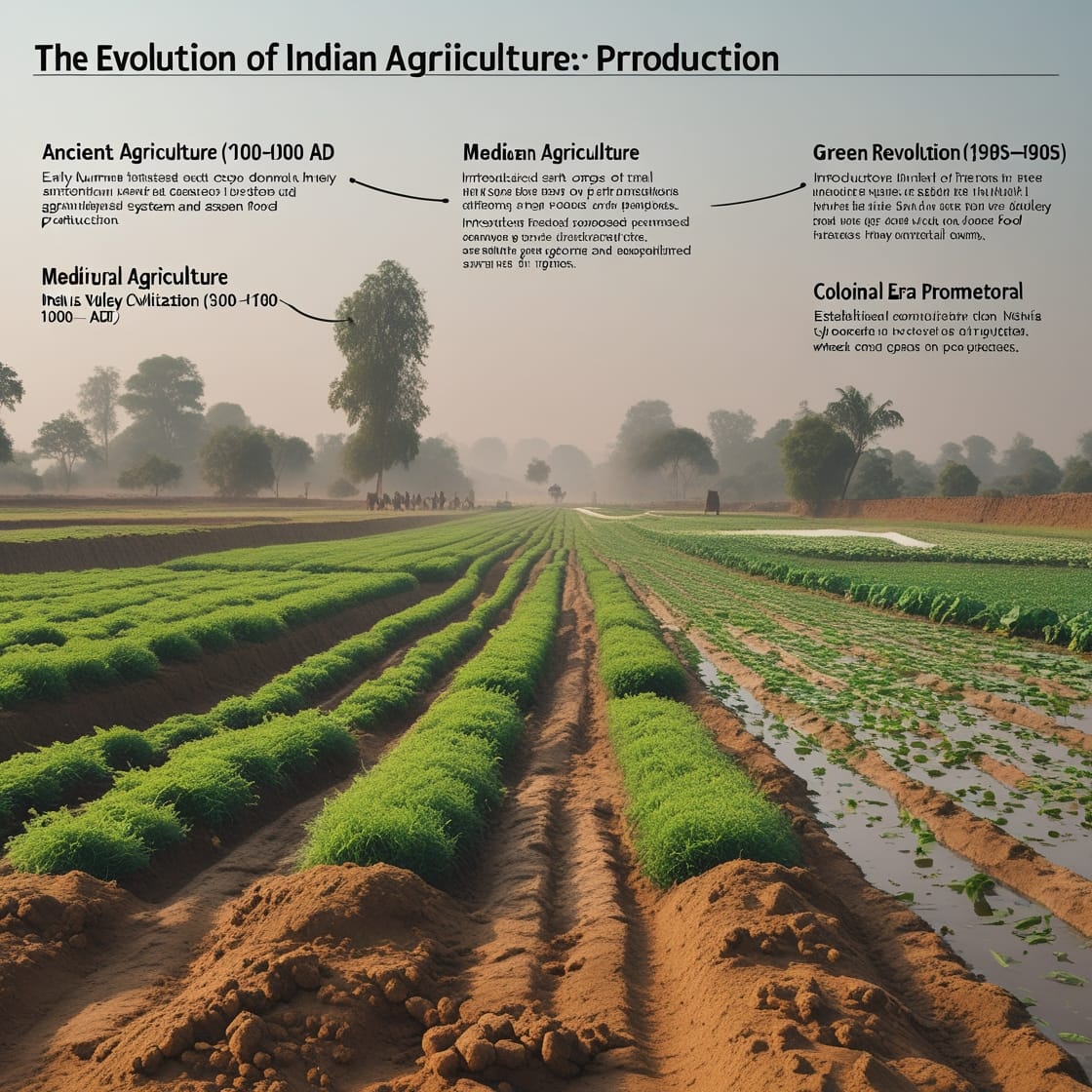Introduction
Indian agriculture has evolved over thousands of years, from the early domestication of plants to the introduction of modern technology. This article explores the key phases of agricultural development in India and how they have shaped the sector today.
Ancient Agriculture (Prehistoric to 1000 AD)
- Early humans in India domesticated crops such as wheat, barley, and rice.
- The Indus Valley Civilization (2600–1900 BC) had an advanced irrigation system and surplus food production.
- Vedic texts mention agricultural practices like plowing and seasonal crop rotation.
Medieval Agriculture (1000-1700 AD)
- Introduction of new crops such as sugarcane, cotton, and pulses.
- Mughal rulers promoted canal irrigation and established granaries.
- Persian and European travelers documented India’s rich agricultural traditions.
Colonial Era (1700-1947)
- The British introduced commercial cash crops like indigo, tea, and jute, disrupting traditional farming.
- Famines due to exploitative policies and a lack of food security.
- Establishment of agricultural research institutions, such as the Indian Agricultural Research Institute (IARI) in 1905.
Green Revolution (1960s-1980s)
- Introduction of high-yield variety (HYV) seeds, chemical fertilizers, and pesticides.
- Dr. M.S. Swaminathan led efforts to improve wheat and rice productivity.
- Increase in food grain production, reducing India’s dependence on imports.
Modern Agriculture (1990s-Present)
- Adoption of biotechnology, genetically modified crops, and organic farming.
- Rise of agritech startups, precision farming, and digital marketplaces.
- Government policies supporting irrigation, soil health management, and farmer welfare schemes.
Conclusion
From traditional farming methods to cutting-edge agritech solutions, Indian agriculture has come a long way. The sector continues to evolve, ensuring food security for the growing population while adapting to climate change and market demands.




